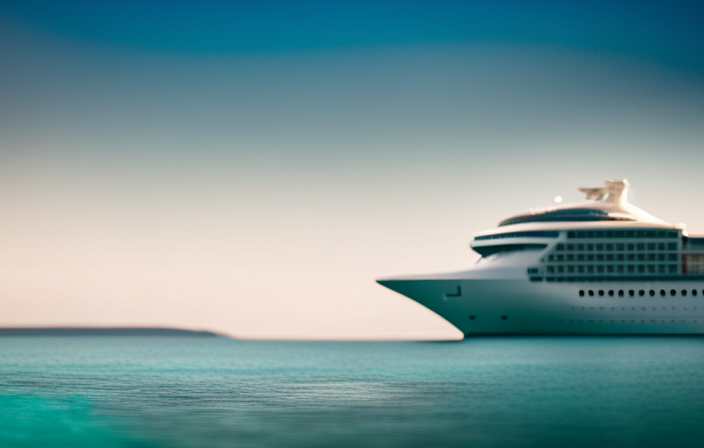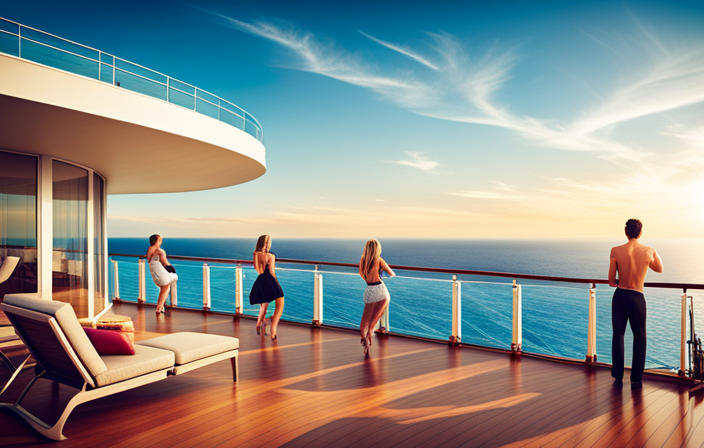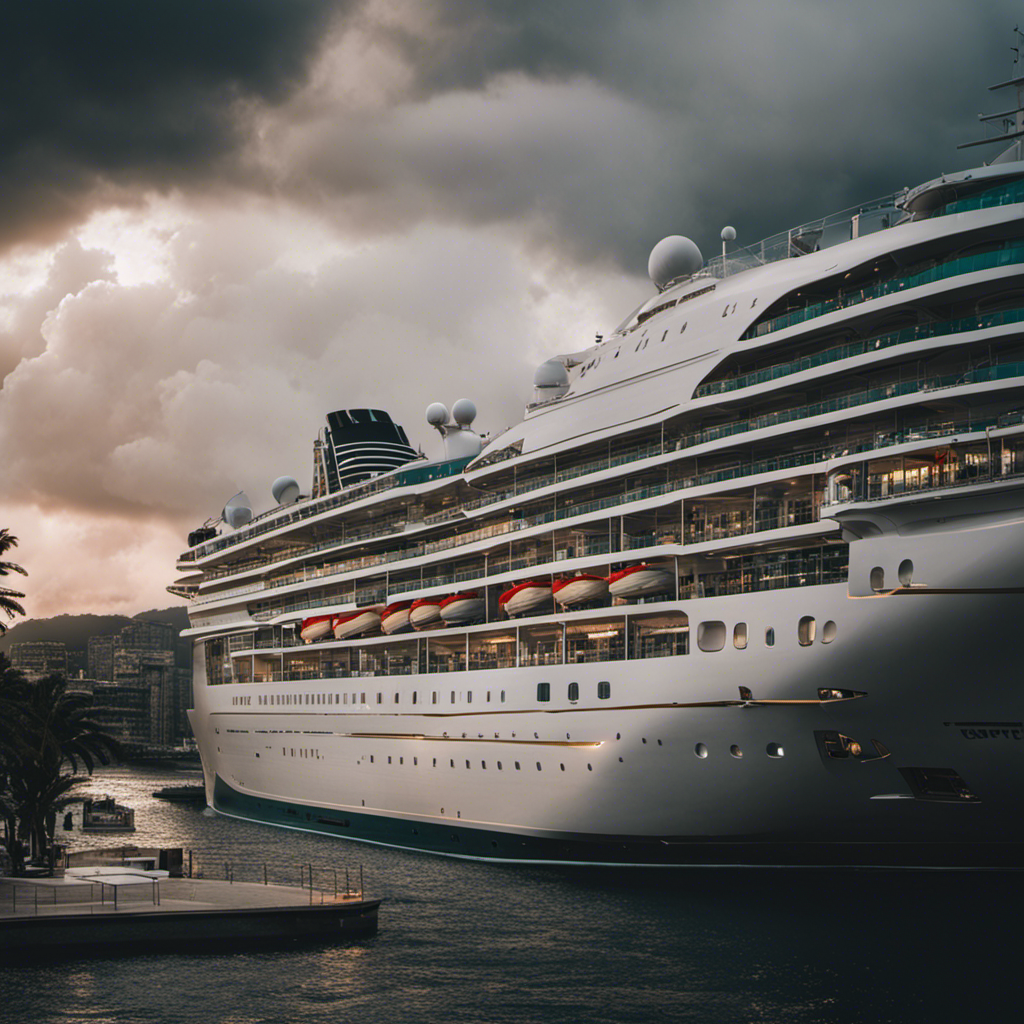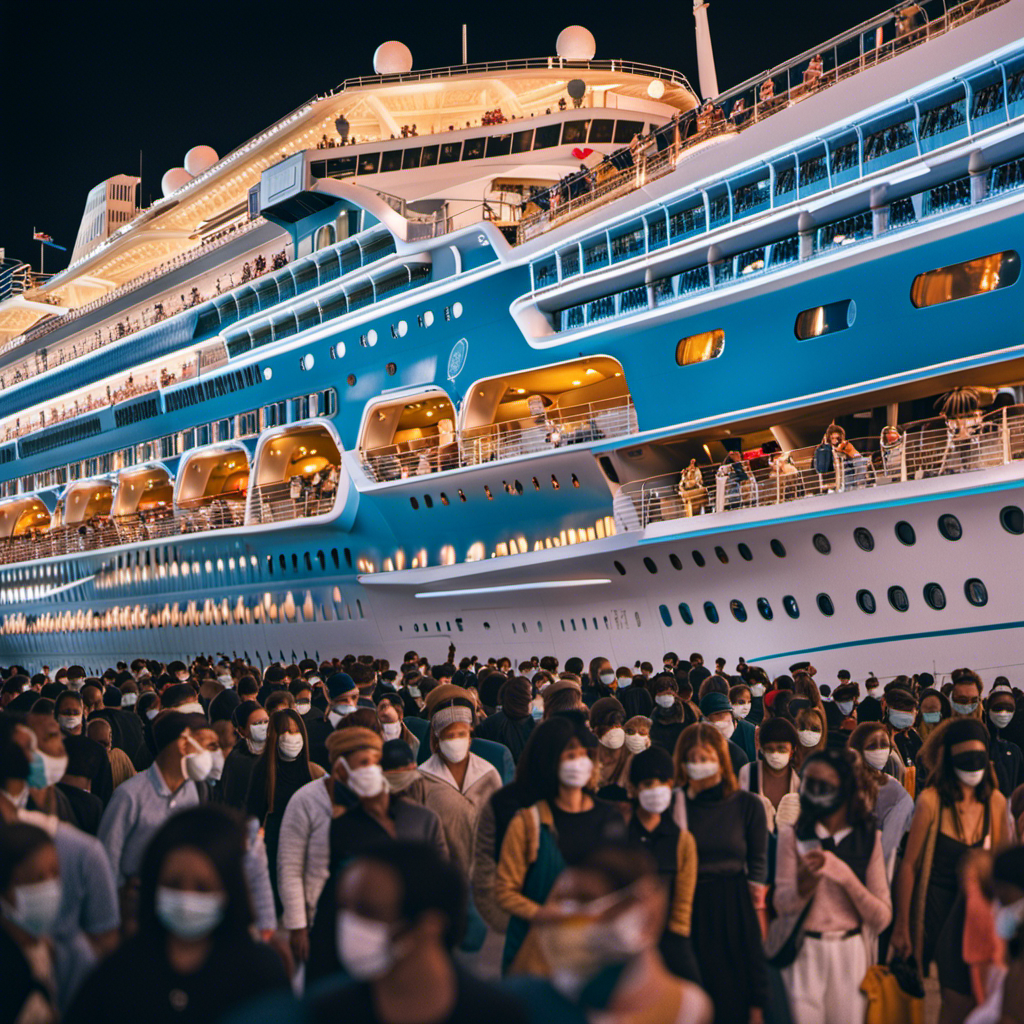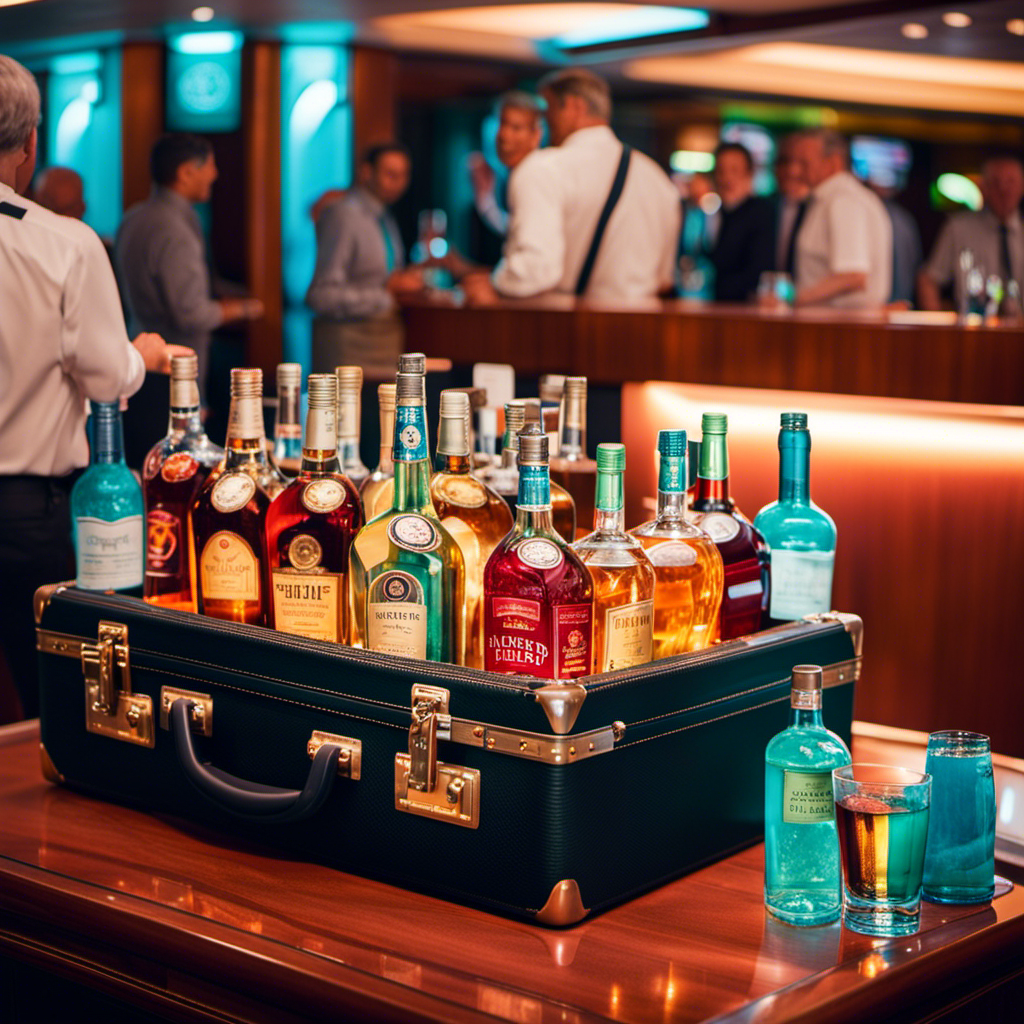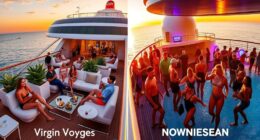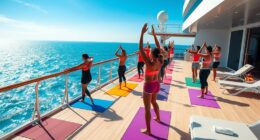Oh, the world of cruise ships. It’s a mesmerizing realm, filled with magnificent vessels sailing the vast oceans, taking passengers to distant, enchanting locations.
The sheer size and power of these floating marvels never fail to astound me. From their towering lengths, ranging from 900 to 1,100 feet, to their impressive fuel tanks, holding a staggering 1 to 2 million gallons of fuel, cruise ships are a testament to human engineering. Some even harness the energy of liquefied natural gas, with engines so colossal they could fill a room. It’s truly awe-inspiring.
Yet, amidst this marvel, we must also consider the environmental impact. Many cruise lines still rely on diesel-powered engines, but the use of LNG reduces carbon emissions by a significant 30%.
As a passionate traveler and writer, I am eager to delve into the fascinating world of cruise ships, exploring their size, power, and environmental impact. Join me as we embark on this journey of discovery and exploration.
Key Takeaways
- Cruise ships are massive vessels that can range in length from 900 to 1,100 feet.
- Some cruise ships use liquefied natural gas (LNG) as fuel, reducing carbon emissions by 30%.
- The environmental impact of cruise ships, particularly diesel-powered engines, is a concern and contributes to air pollution and climate change.
- The adoption of sustainable cruise practices, including the use of LNG fuel, is crucial for a more sustainable future and to mitigate the environmental impact of cruise ships.
Cruise Ship Specifications
Cruise ship specifications are an important aspect to consider when understanding their size, power, and environmental impact. These massive vessels can range in length from 900 to 1,100 feet, accommodating thousands of passengers and crew members.
Fuel consumption is a significant consideration, with cruise ships typically carrying 1-2 million gallons of fuel in their tanks. Some ships are now incorporating LNG tanks, which reduce carbon emissions by 30%.
The shipbuilding process is a complex endeavor, with engines playing a crucial role in powering these floating cities. Cruise ships are equipped with 4-6 engines, each generating an impressive 18.5 megawatts of power. These engines, measuring up to 45 feet in length and 27 feet in height, propel the ship at an average speed of 18-22 knots.
Additionally, cruise ships are equipped with two anchors weighing 10-20 tons each, ensuring stability while at port.
Engine and Power Details
When it comes to engine and power details, it’s important to consider the environmental impact and the need for alternative fuel sources.
Cruise ship propulsion plays a crucial role in determining the ship’s fuel efficiency and carbon emissions. Most cruise ships are equipped with 4-6 engines, each generating 18.5 megawatts of power. These engines can measure up to 45 feet in length and 27 feet in height.
While many cruise lines still rely on diesel-powered engines, there is a growing shift towards using liquefied natural gas (LNG) as a more environmentally friendly fuel source. LNG-powered ships can reduce carbon emissions by up to 30%.
As the cruise industry continues to evolve, it’s crucial for shipbuilders and operators to prioritize fuel efficiency and explore sustainable propulsion options to minimize their environmental impact.
Environmental Impact
As an enthusiast of the cruise industry, I am deeply concerned about the ecological consequences of traditional diesel-powered engines commonly used on cruise ships. Cruise ship emissions have a significant impact on the environment, contributing to air pollution and climate change. However, there are sustainable cruise practices being implemented to address these concerns. One such practice is the use of LNG-powered fuel, which reduces carbon emissions by 30% compared to diesel. This is a positive step towards minimizing the environmental impact of cruise ships.
To visualize this information, here is a table highlighting the environmental impact of cruise ship emissions:
| Environmental Impact | Consequences |
|---|---|
| Air pollution | Increased respiratory |
| problems | |
| Climate change | Rising sea levels |
| and extreme weather |
By adopting sustainable cruise practices and transitioning to cleaner fuel sources like LNG, cruise ships can help mitigate their environmental footprint and contribute to a more sustainable future.
Frequently Asked Questions
What are some popular destinations for cruise ships?
Top rated cruise ship destinations include the Caribbean, Mediterranean, Alaska, and the Baltic Sea. These locations offer stunning scenery, cultural experiences, and a variety of activities. The cruise industry is adopting eco-friendly practices to reduce its environmental impact.
How many passengers can a typical cruise ship accommodate?
A typical cruise ship can accommodate thousands of passengers, resembling a floating city. With various cruise ship designs catering to different market segments, the cruise ship market continues to evolve to meet the needs of travelers worldwide.
What are some unique amenities or features found on modern cruise ships?
Luxury accommodations and innovative dining experiences are some unique amenities found on modern cruise ships. Passengers can enjoy spacious suites, private balconies, gourmet restaurants, and specialty dining options that cater to various tastes and dietary preferences.
How do cruise ship companies ensure the safety and security of their passengers?
Cruise ship companies ensure the safety and security of their passengers through various measures. They have well-equipped medical facilities onboard and conduct regular emergency drills to prepare passengers for any potential emergencies that may arise during their voyage.
What are some common activities or entertainment options available on cruise ships?
Cruise ships offer a wide range of activities and entertainment options. From gourmet dining experiences to luxurious onboard spa and wellness facilities, passengers can indulge in relaxation and enjoy a variety of amenities during their cruise vacation.

